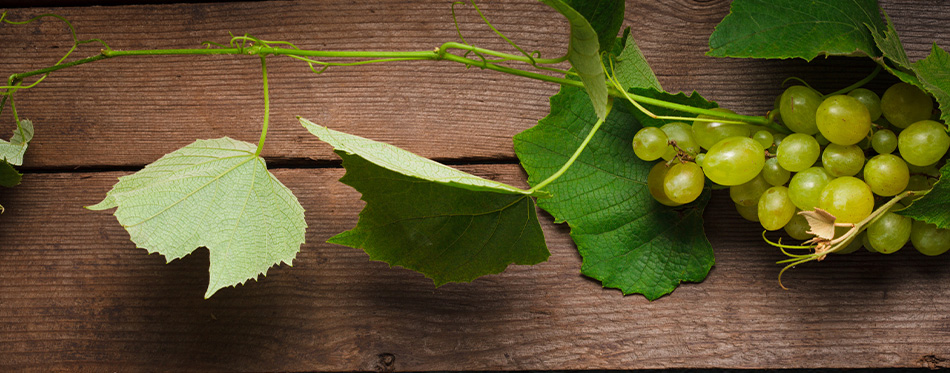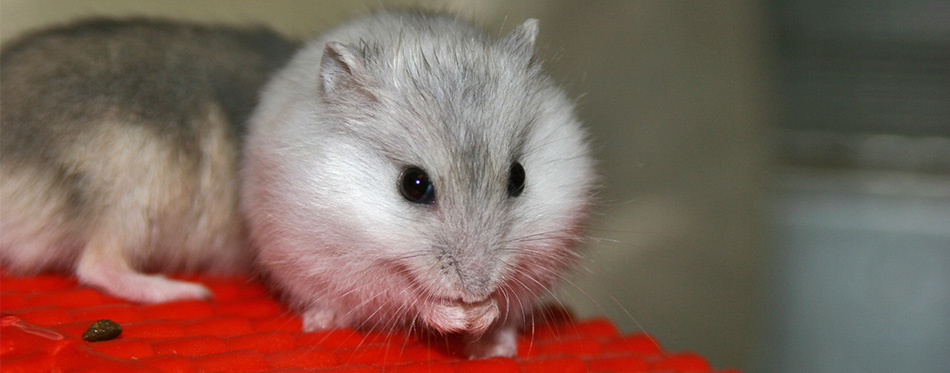Working out what to feed your hamster can be a tricky task. If you are looking to offer them a healthy treat, grapes seem to be an obvious choice as they are a small fruit packed with vitamins and minerals. But the question remains: can hamsters eat grapes. The short answer is yes, they can! Hamsters can eat all manner of fruit, but you should avoid anything that contains citrus such as lemons and oranges. But before you go out searching for a whole bunch of grapes to feed your hamster, you should slow down a little bit! Too many grapes can lead to issues such as diarrhea and stomach upset.
So, let’s get into the topic of hamsters and grapes in more details. And the first point brings us onto…

Safety of Grapes for Hamsters
While it is commonly known that grapes are not safe for cat and dog consumption, the same doesn’t go for hamsters. The other two pets are primarily carnivores, while rodents are mainly herbivores, so it makes sense that they have very different digestive systems. And this is great news as they are packed with antioxidants and other vitamins and minerals. One of the only possible problems could arise if your hamster is allergic to grapes. So, whenever you are introducing your pet to a new food, you should start off small and work your way up from there. Consult with your vet if you want further reassurance that everything is okay.
Remember that hamsters are very small creatures and don’t need a lot to eat at all. Around 12 milligrams of food per day is enough, and this number makes it obvious to see why overfeeding is such a big problem! Pellets and vegetables should make up a big percentage of this, but fruit is a worthwhile snack that fills in the gaps. Fruit is high in sugar, and too much of it can contribute to issues like fatty liver and diabetes. So, it doesn’t need to feature in your hamster’s diet more than twice a week.
Hamster owners have been offering grapes to their little furry friends for a long time, and there is no hard evidence that they are harmful. Of course, like any other creature on the planet, some food products cause adverse reactions, which is why it is always worth erring on the side of caution and offering anything new in small quantities.
Now you may be asking exactly how you can properly feed your hamster grapes. Well, let’s get onto this now.
How to Properly Feed Hamsters Grapes
The high sugar content in grapes is the main reason to have cause for concern about feeding them to your hamster. In the wild, they wouldn’t naturally have access to a lot of sugary treats. This means that moderation is the key word when you are feeding your hamster grapes. Two or three servings a week is enough. And a ‘serving’ should either comprise of a very small grape or one that has been cut up into smaller pieces or cubes.
Ideally, you should buy seedless grapes for your hamster as this takes away their risk of choking. It also helps if you peel the fruit as well. Not only does this make life easier for your hamster, but it also removes any harmful pesticides which may have been lingering on the grape. First, you should feed them a small test piece to check for any signs of discomfort. After all, not all hamsters are going to go crazy over grapes! Once you have confirmed that they like it, you can gradually start introducing it to their diet. Remember, to give your hamster even more nutrients, you can alternate giving them grapes with other fruit such as pears, bananas, and apples. As mentioned earlier, citrus fruits are what you want to steer clear of.
Another possible way that you can feed your hamster grapes is in the dry form. Sultanas and raisins are an option, but you need to be aware that they have had most of their water removed and the sugar content is higher. So, you shouldn’t risk offering them too much. As a hot weather treat, you could also try offering your hamster frozen grapes.
Problems to Watch Out for When Giving Grapes to Hamsters
When you are feeding your hamster anything at all, you want them to be safe. We just mentioned earlier how important it is that you don’t make the portion size too large. And if everything doesn’t seem right, there are a few signs that are worth looking out for. Pica is a common behavior which indicates stomach upset. Basically, this consists of chewing on non-food material such as their bedding. You should also check to see whether or not your hamster develops diarrhea after eating a grape. Also, you may notice a reduction in appetite and some general tiredness in your hamster.
If these symptoms persist for more than a day, it is worth taking your hamster into the vet to confirm that everything is okay.

Final Thoughts
In conclusion, grapes make a great occasional healthy snack for your hamster, but they shouldn’t be fed in high quantities. A small piece of grape every now and then – a couple of times a week at most – is plenty. When you are introducing your pet to any new foodstuffs, it is always worth monitoring them for any signs that everything is not entirely right. Remember that fruit contains a lot of sugar, and if your hamster were to eat it too often, this can result in weight gain and an increased risk of diabetes.
Before you serve grapes to your hamster, make sure to remove the skin and seeds and cut it into a nice, small portion which is not going to pose a choking risk. Most hamsters are absolutely fine with grapes but consult with your vet if your hamster experiences any adverse reactions.

